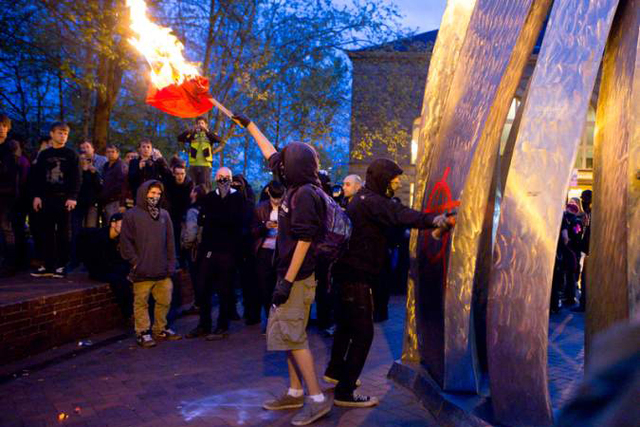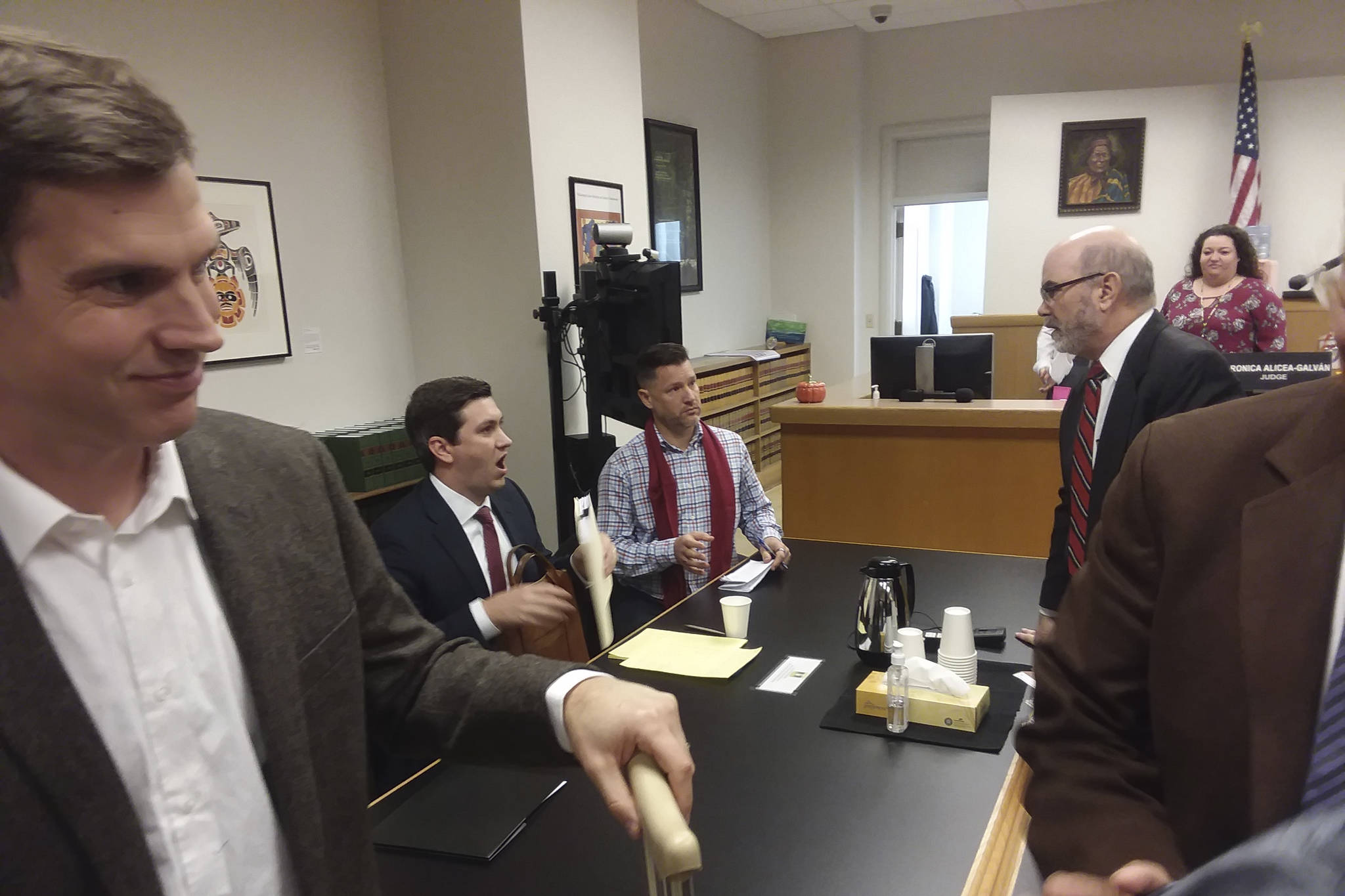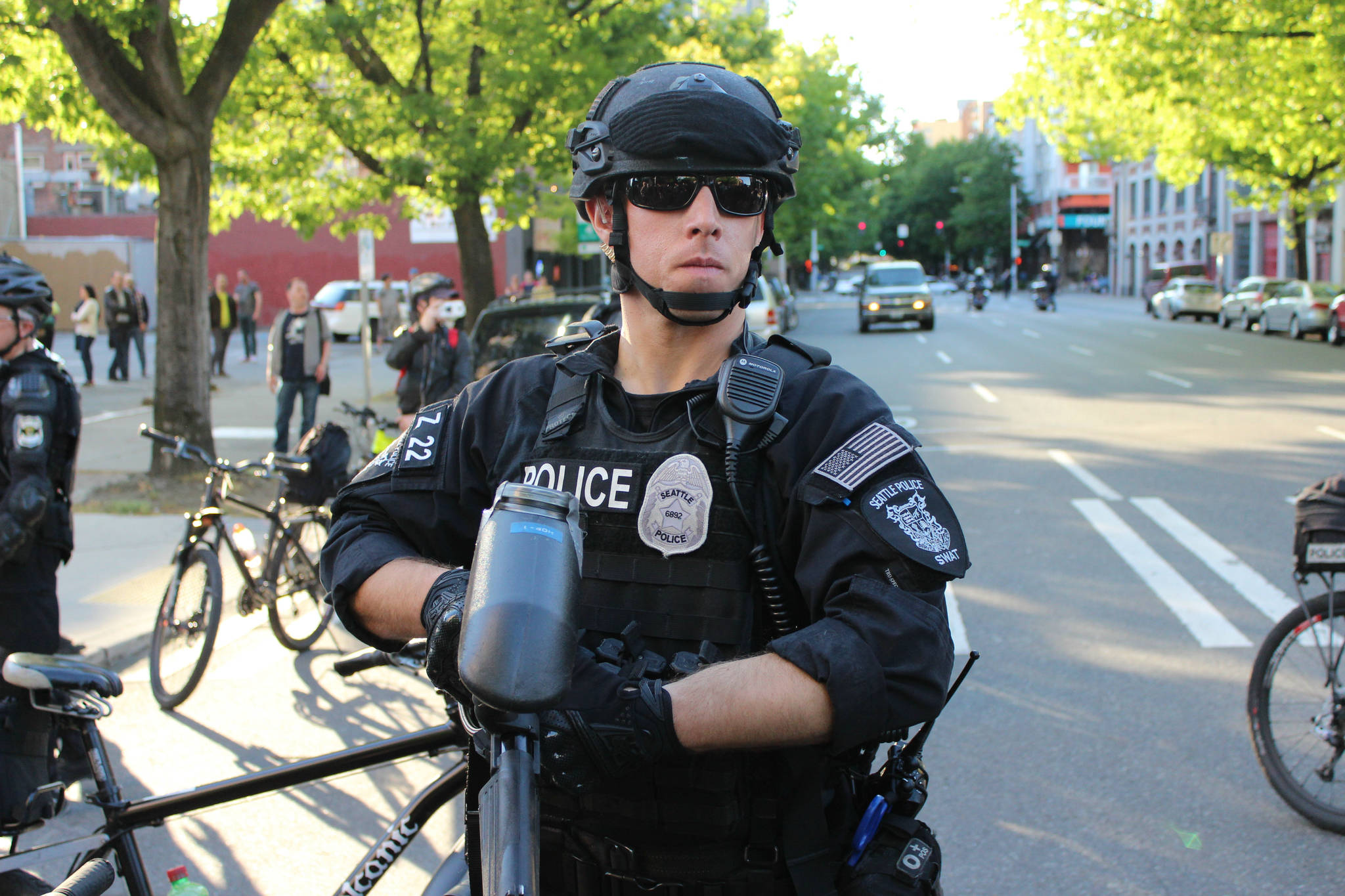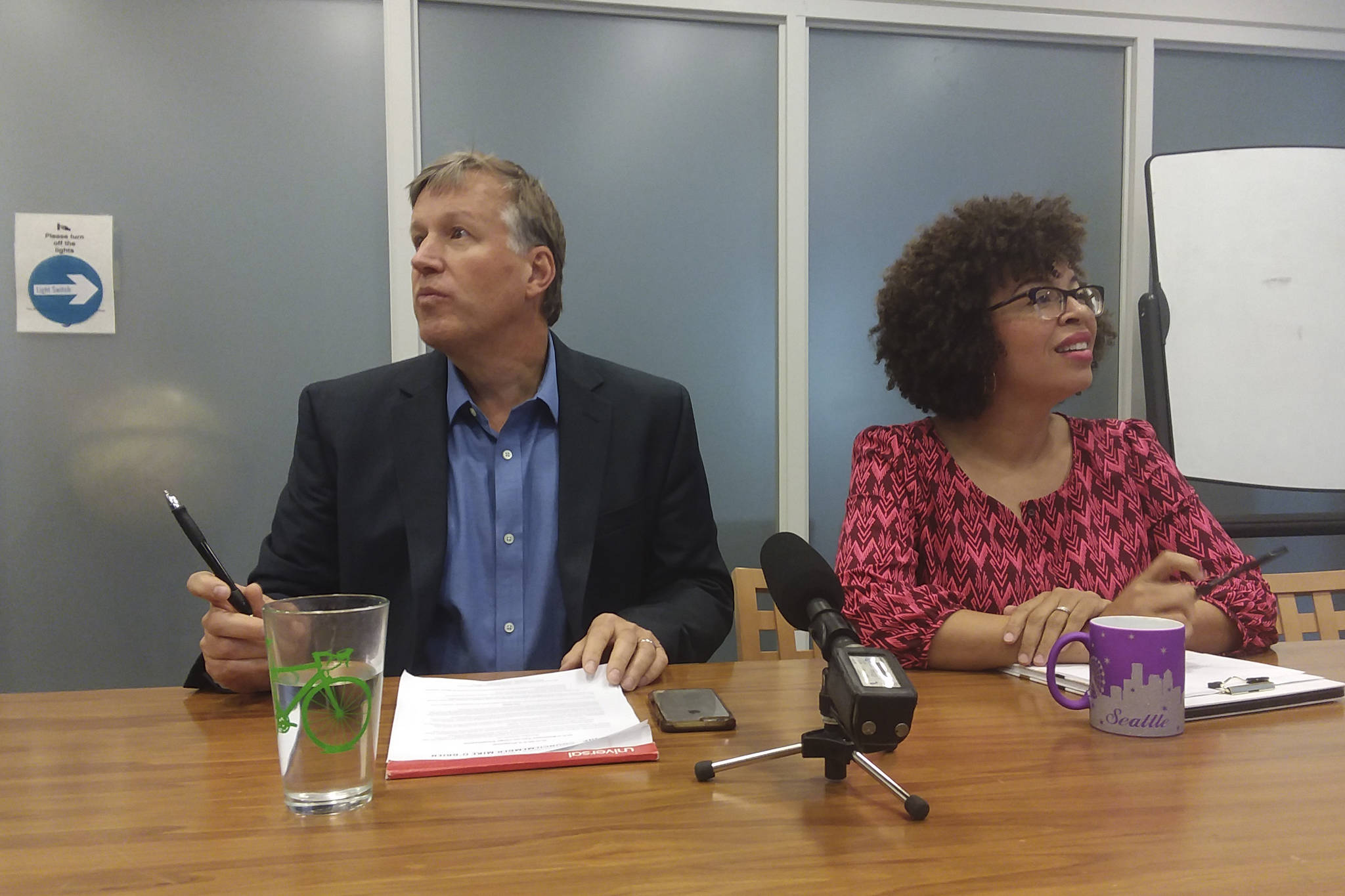On May 1, radical leftists around the world will march to in protest of myriad injustices wrought by capitalism. The day, which we all know as May Day, also commemorates the Haymarket Massacre, an 1886 protest for an eight-hour workday that turned into a bloodbath for both protesters and police after an unknown person threw a bomb at police.
If recent local history is any guide, the evening’s anti-capitalist march will carry on the tradition of that first May Day and include skirmishes between police and protesters (particularly black bloc protesters, who wear all-black and masks to make it harder for police to identify them), along with a few smashed windows and some graffiti.
This march (not to be confused with labor and immigrant rights marches earlier in the day) is often dismissed in public discourse as a self-indulgent bacchanal of property destruction, thinly veiled under the guise of political activism. Faced with images of smashed windows at Starbucks or Niketown, conservatives wonder how Seattle can allow such hooliganism, while progressives fear they’ll be tarred with the same brush as said hooligans and thus discredited.
One response to these criticisms is that police, whose actions have real costs, are at least partly to blame. Which is true, at least insofar as SPD has often exacerbated, rather than de-escalated, clashes with protesters in the past. But that’s a separate kettle of fish: the need for police reform isn’t the same thing as a justification for anti-police vandalism. It’s possible for both sides to be wrong.
So: is there any justification for the blocked traffic, smashed windows and graffiti that Seattleites seem to see every May Day evening? These actions also have real costs for real people—the frightened student who flees indoors from the crowd, the dad driving his kid to the doctor, the business owner who has to cancel her employees’ bonus in order to pay for window repairs. Those kinds of costs demand some kind of explanation: “What gives you the right to block, smash, and deface the city I live in?”
I asked Shon Meckfessel, with whom I trained as a writing tutor and who I consider a friend, whether he thinks there’s any justification for May Day vandalism. Meckfessel has been an anarchist activist for decades, and teaches writing at Highline College. More to the point, he wrote about this very subject for his PhD thesis, which is the basis for his forthcoming book Non-Violence Ain’t What It Used to Be: Unarmed Insurrection and the Rhetoric of Resistance.
(Meckfessel emphasizes that he speaks only for himself—he’s an observer, not a representative. This interview has been heavily edited for length and clarity.)
A common criticism of vandalism and property destruction on May Day is that it’s not strategic—it’s just self-indulgent joyriding under the guise of political activism. What’s your response? A lot of the time people are satisfied with surprisingly simple answers that I don’t think can describe a really complicated phenomenon. For example, this sort of “tantrum” thing, that there’s these spoiled kids who just have daddy issues, tantruming…. We have to understand the ways that people who don’t have access to institutional power exercise political agency.
Explain to me how marching and smashing windows is an effective political strategy, and what it’s effective at doing. In order to understand what’s going on with these events, you have to read it within context. So the fact that it’s May Day within this 130 year old continual tradition of anti-capitalism, of objections to capitalism … says a lot already.
A bunch of young people take to the streets and make space for rage, and publicly disobey rules and manifest their discontent … I can’t imagine how anybody could say in good faith that they don’t know why young people would be angry [about, for example, income inequality and climate change]. And for those people who don’t understand what young people have to be angry about with their future, with the state of the world—these protest actions aren’t addressed to those people. It’s almost like, “Figure that out elsewhere.”
It’s like how a French play isn’t aimed at an English-speaking audience. Yes…Every communication act is pitched at a certain audience. And the people who don’t get it are not the people who are addressed by this.
So for Joe Sixpack, when he looks at last year’s May Day, he sees individuals smashing up individual businesses. And from his perspective, it’s a violation of the social contract. He thinks, “That could be my store that they’re tearing up.” And so he’s against that property destruction. Whereas you’re talking about a different point of view, where we no longer see individual persons smashing individual businesses, but rather a world where capitalism has created a horrible empire that we’re all trapped in, and things are desperate enough that any kind of resistance to push back against the empire is worthwhile. That’s not really the language I’d use. I mean, sure…You’re approaching it similarly…
If somebody looks at this event and says, “Why are those kids so mad?,” this is not for them. They’re not the audience of this event….[The protesters’] bigger concern is that a huge number of people are very desperate and frustrated about the severity of a lot of the problems that we’re facing, and don’t feel like there’s space to act. That’s the real issue, and that’s who this is addressed to.
A lot of people, when they see Niketown getting smashed up, are going to compare…[that] to its everyday benefit…[of] contributing to the Seattle economy, and tax dollars being paid into services, or whatever.
But I think a lot of people who are smashing Niketown aren’t making that comparison. They’re comparing the violence of the moment that they’re enacting to, like, the violence of child labor in Indonesia that goes into producing those shoes.
[Critics of May Day say] it’s a huge scandal … that some kids dressed in black smashed things on May 1st in Seattle. It’s hardly a scandal at all that police killed Che Taylor. But I think the actions of [the May Day] scandal is meant to call those values into question. It’s meant to get people talking about violence, and say “Why would somebody do that?” And at least some people might say, “Well, what’s that compared to the loss of this young black life?” … I’m sure that’s on the minds of a lot of people who are out there. They’re trying to draw to mind a lot of unseen, undiscussed violence by making a visible act of really trivial violence, if you compare it to the violence of lives that are lost.
But if I want to draw attention to the violence of child labor, wouldn’t it be more effective to—rather than smashing the window, and having everybody at home watching TV news start talking about the smashed window—have, for instance, a civil disobedience sit-in, where you block the entrance and hold up signs showing child labor? I’m not sure that anyone has to say what the most effective thing is…. If you want somebody to prove why this is the most effective way to change the world, I don’t have an answer. [But, Meckfessel continues, look at how much our current political system has disenfranchised most people.] So what do you do instead? There’s no easy answer, but clearly May Day is … grasping at trying something.
This makes me think of the protests and riots in Baltimore after police killed Freddie Gray. One might argue that coordinated civil disobedience would have been a better reaction, but at least for me, I much prefer the riots to nothing. Is that kind of like what you’re talking about? Well, this is tricky territory, but sure, it’s analogous…. People [in Baltimore] were quick to say, “Why do you care more about broken windows than broken spines?” … I’m sure a lot of people think of [the anti-capitalist march] as a key opportunity to draw attention to police abuses. What else is somebody going to do? If you go there, count how many signs say something about police and violence.
[Let’s compare the] tokenistic violence of petty vandalism and property destruction that shocks people [to] the murder with city funds of [Che Taylor,] a young black man who had just been released from prison and had his life ahead of him. If you have limited channels to make your grievances heard, this might be the most direct channel that you have available.
The thing that I think is forgotten when we talk about non-violence is that in its most successful moments—Gandhi, King—non-violence was chosen as an option when the very clear, palpable alternative of violence was already present. If you actually look at what King and Gandhi were doing, they constantly pointed this out. They highlighted how close riots were, and actual injurious violence … King said you cannot call something non-violence simply because you lack the tools to enact violence. To me, he’s literally saying you have to actually be capable of enacting violence in order to choose non-violence. And Gandhi had similar things—You cannot mistake mere weakness with non-violence.
Protests are effective because they carry the threat of greater expressions of anger behind them. So when those things are effective, they’re beautiful. But in order for them to be effective, they have to be understood as a threat, and for them to be understood as a threat they have to have a greater power behind them. Classical non-violent advocates understood that, and for the most part I think contemporary non-violent advocates have forgotten that.
They just ask nicely. They ask nicely, which doesn’t get you anything. And I think Gandhi and King knew that very well.
For a young, progressive Seattleite who genuinely cares about the issues we’ve been discussing, why should they have sympathy, or at least not antipathy, toward black bloc protesters if they smash windows on Sunday? I don’t know if I can answer that. I’m not saying what people should like. What I’m answering as a scholar is, Why does this happen?
There’s already been a lot of writing even about this [coming] May Day, about “Why would this [kind of vandalism] happen?” And I feel like those articles are punching down. They’re just sort of mocking people who do this stuff, without actually looking for where it’s coming from. There’s this demographic myth that it’s rich, white guys who are doing it for kicks, and in my years of research into this I’ve never found that to be the case. These actions are as diverse as the populations of this city.
I guess I’m still where I was at the beginning of this interview: I agree that we need to do something, but not this. Like, I’m fine with someone smashing Niketown’s windows, but what about a small business like Bill’s Off Broadway or the public square outside Seattle Central College? Most of the time it does tend to be corporate businesses that are targeted, both in Seattle and globally when these things happen. Not exclusively—what social phenomenon is ever that clear cut?
Sure, dumb stuff happens. But what’s really illuminating is the concern that’s shown about that. In the instances that we’ve talked about, there’s an outrage about those moments, even though these things are really not beyond the daily operating budget of the bar you’re talking about or the school… The cost is not extraordinary. Which brings me, as somebody who studies this, to wonder, “What is extraordinary about it that causes this outrage?”
And some of the people that I’ve talked to say that that outrage is actually proof of the importance of these kinds of actions. Apparently most of the City of Seattle is not so upset when Che Taylor gets gunned down for questionable or no reasons by the Seattle police department—gets gunned down with a paltry investigation afterwards.… And yet there’s an outrage when a store window gets broken or there’s some stray graffiti, when it’s time to do political things. So the fact that there is this outrage shows that we do have these strangely placed values, and I think these actions a lot of times work to call those to attention, and say, “Why is it that we value this and not that? Why is it that this causes outrage and this other thing is an interesting sidebar for two days and goes away?”








